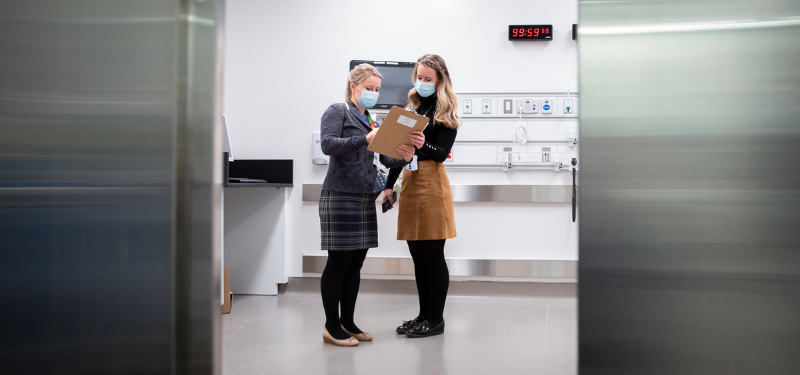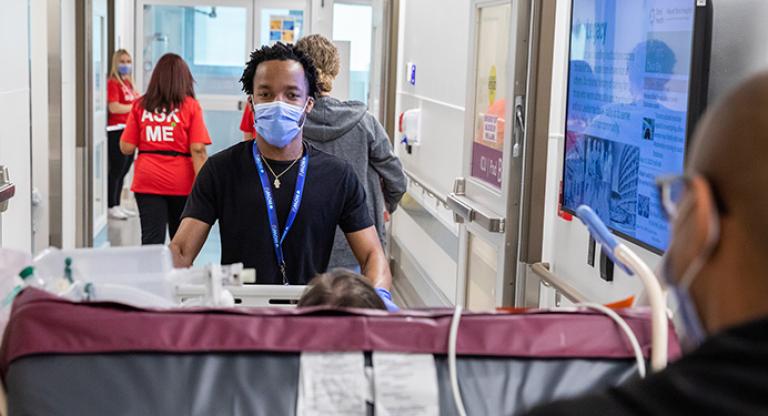Human Factors ─ engineering a better Emergency Department

It’s another busy day in the Emergency Department, as the team prepares for the opening of its new Resuscitation Room Zone in March. For patients who have sustained potentially life-threatening events, the area will provide space for early intervention critical for their best chance of survival.
Assembled in one of the resuscitation rooms and perched over a patient dummy, the team huddles close. They are conducting a mock simulation of a Protected Code Blue, an organized emergency response to a life-threatening event for a patient.
And quietly observing the process is Agata Lawrynczyk, part of the hospital’s team of Human Factors engineers.
Human Factors engineering focuses on the understanding of systems, work flows and areas through a risk and safety perspective, while attempting to “take out” human factors which can lead to error. It is increasing being leveraged in the design of new spaces, such as Mount Sinai Hospital’s new Emergency Department.
“Generally we try to understand the environment in which humans work, the jobs they perform, the tools and equipment they use,” says Agata. “The Emergency Department is obviously an area where you have a lot of high-risk scenarios, so it’s really important to consider all these factors, to design it in a way to minimize the risk of human error.”
Mount Sinai is the only hospital in Toronto with an operational Human Factors team working exclusively within the facility to provide dedicated Human Factors support. Agata provides an example of the importance of involving Human Factors early on in the design process. During a mockup of the department’s new triage area, the team acted out various emergency scenarios that could arise and recorded everything to identify risks or design flaws. One of the scenarios involved a patient arriving in a wheelchair. The team quickly learned that the reception cubicle door swung in the wrong direction, blocking access to the patient. This resulted in a request for a design change.
Kelly Shillington, an Emergency Department Registered Nurse and Program Champion for the project reflects on what this means for patients, “There are so many scenarios and patient experiences where we are leveraging Human Factors’ guidance and expertise. This collaboration will undoubtedly have a very long-term, positive impact for patients receiving care in the Emergency Department.”
The Resuscitation Room Zone addition is part of the department’s Phase 1 renovations, scheduled for completion in Spring, 2021. The fully redesigned and expanded Schwartz/Reisman Emergency Centre is planned to open in 2022 and is part of the Renew Sinai Phase 3A project, the largest and most ambitious redevelopment in Mount Sinai Hospital’s history.











